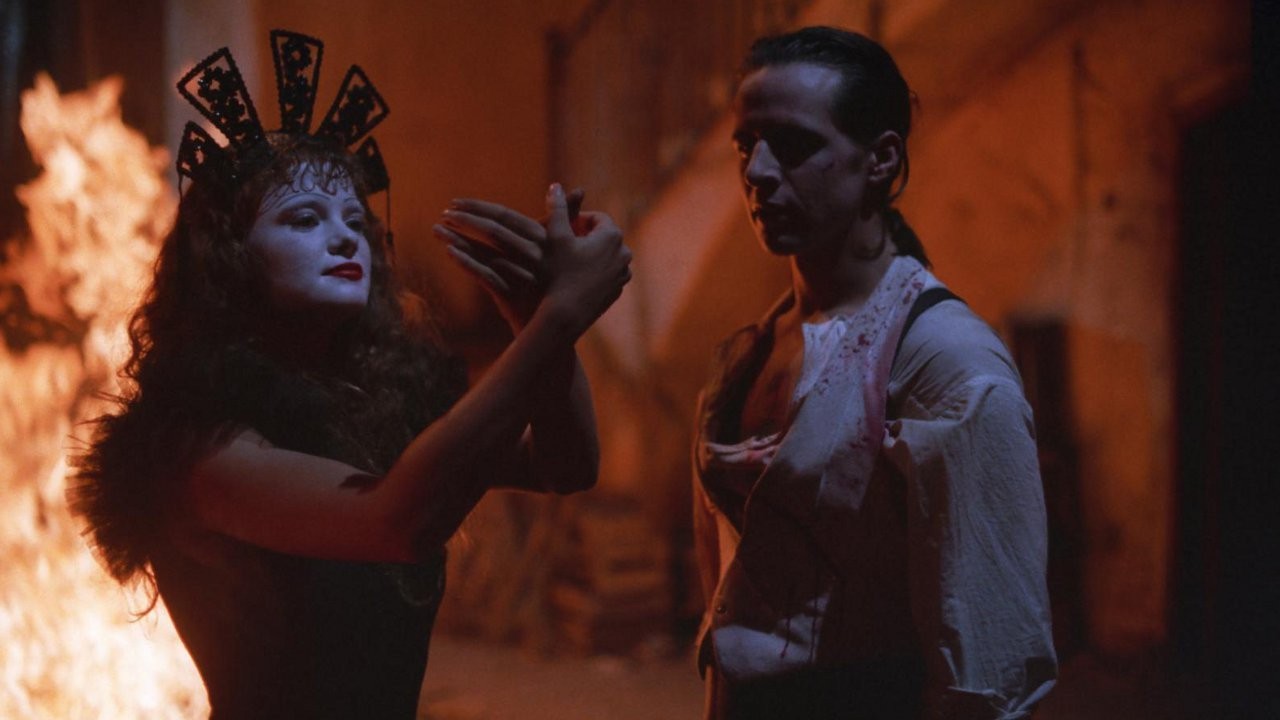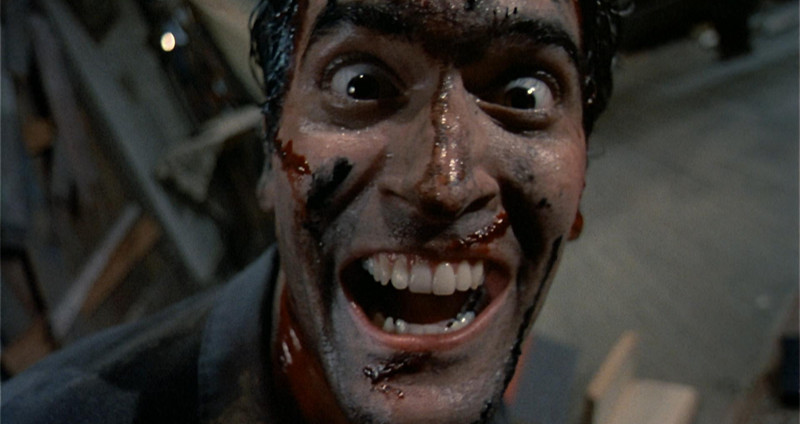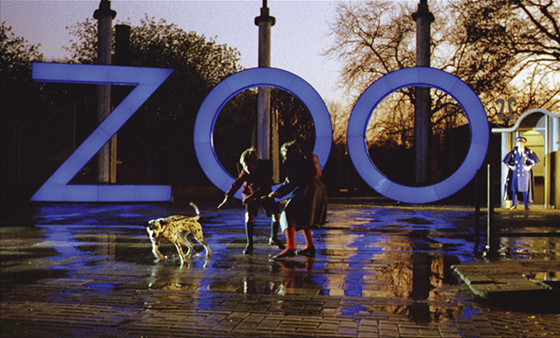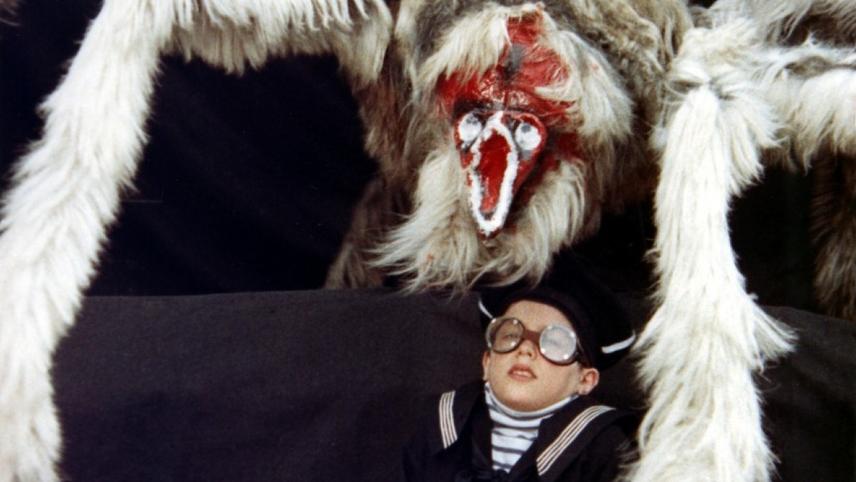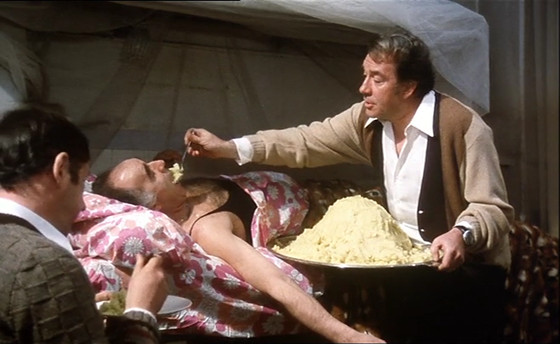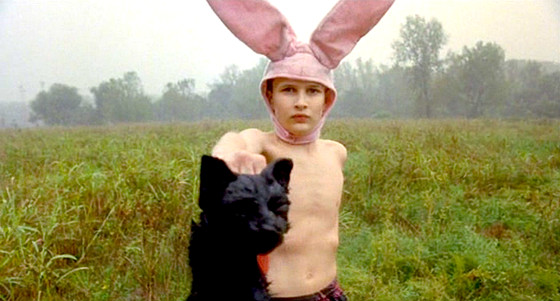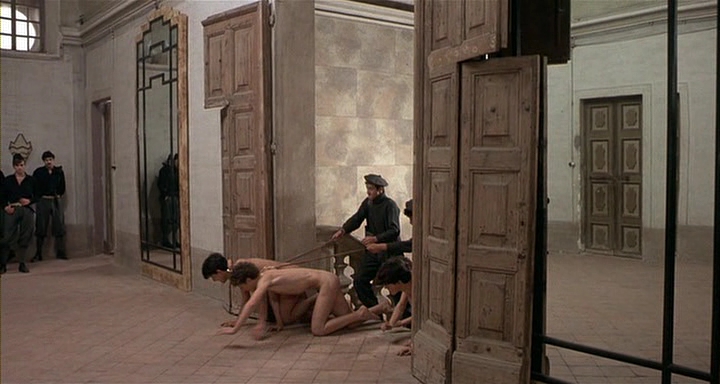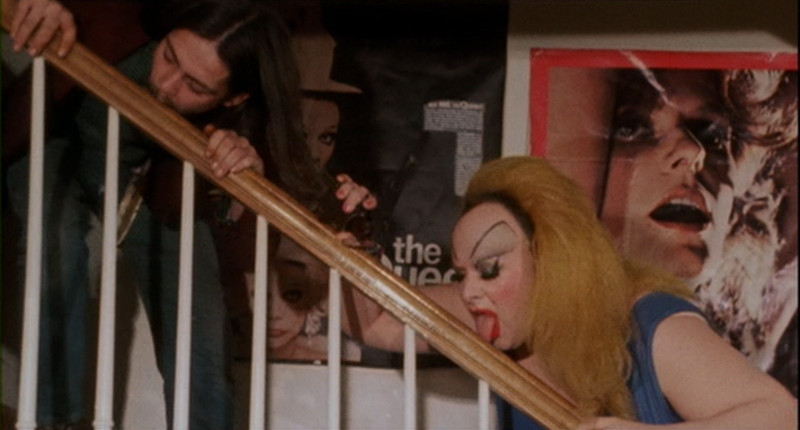8. Santa Sangre (1989)
The world of circus is certainly interesting for the depiction of grotesque; performers are often seen as outsiders, unconventional travelers, or simply as monsters, as exemplified in “Freaks” (Tod Browning, 1932) and “Multiple Maniacs” (John Waters, 1970). Director Alejandro Jodorowsky, already known for his cult masterpieces “El Topo” (1970) and “The Holy Mountain” (1973), takes a stab at more of a “conventional” storytelling in “Santa Sangre”.
Largely influenced by Tod Browning’s “Freaks”, Jodorowsky’s tale is one of diving into madness. Having witnessed his parents involved in a traumatic bloodbath during his childhood, Fenix is living in an asylum until his mother, who is missing both her arms, convinces him to go out and become her vengeful hands.
Fenix, while in contact with his mother, gradually realizes that his own arms are not his anymore. They have become inhabited by the rage and violence of his mother (in a not-so-subtle Oedipial complex). When his mother next targets the object of his love, Fenix has to confront her.
The idea of an incomplete being, of two people mashed into one, underlies the entire movie. Unlike in Jodorowsky’s other movies, grotesque appears less in sporadic moments and more in the plot’s constitution, of this double reality lived by both the mother and the son.
7. Evil Dead II (1987)
Even if the original “Evil Dead” (1981) has already marked the splatstick genre (where comedy rises from the films’ extreme gore and special effects), the sequel is truly a piece of its own, recreating the same story, but with more effects, more blood, and above all more comical horror scenes, pre-destined to become classics.
From the hysterical laughing deer on the wall to Ash wrestling with his own possessed hand, the idea of possession in “Evil Dead II” is one of intrusion, of a body that is never completely all right, of a world where no one is safe from the contagious craziness arising from the old cabin in the woods.
Here the trees rape the girl who tries to escape, the best friends become the ultimate enemy to eviscerate, and the best friend’s stepmother (literally) seeks to devour him. There’s nothing safe in “Evil Dead II”, which makes it a truly terrifying yet hilarious film. In grotesque, exaggeration is the key to laughter. Successfully playing on the feeling of “too much”, the film remains one of the funniest pieces of the genre.
6. A Zed and Two Noughts (1985)
Images of decomposition and incompletion are motifs in Peter Greenaway’s “A Zed and Two Noughts”. After a tragic car accident involving both of their wives, two twin zoologists start searching for the meaning of life in the study of animals in decay.
Alba, the woman who was driving the car, becomes a love interest for the two brothers, who complete each other as if they were only one. Provoking the decomposition of always-bigger animals, the twins become obsessed with nature’s slow process of destruction, mirrored by Alba’s transformation.
“A Zed and Two Noughts” is filled with amputees and unfinished bodies. Alba loses a leg in the accident and her surgeon suggests, in order to satisfy his own creative vision, to cut off her other leg. Becoming less and less of a body, Alba captivates the two brothers by being both a motherly figure and an object of experimentation. Ultimately, their fascination for decay will apply to the human body, with all the emotional implications it entails.
5. I Will Walk Like a Crazy Horse (1973)
Fernando Arrabal’s surreal drama takes place in an isolated manor where a young man, Aden Rey (George Shannon) runs to the desert after the death of his mother to avoid any questions from the police. He then encounters a wild little man, Marvel, who apparently lives in the desert. After being saved by Marvel, Aden wants to show him the world and let him enjoy the benefits of his opulent lifestyle.
Despite a quite simple storyline, “I Will Walk Like a Crazy Horse” remains strongly symbolic. The vision of society presented by Arrabal is one of restriction and laws, and the apparition of Marvel seems to render these restrictions obsolete. Story of destruction and reconstruction, the film is filled with images of death, sex, and feces.
The final scene, where Marvel brings a dead Aden in the desert and eats him so they can be one, is a perfect combination of gut-wrenching images and simple, almost comical presentation.
4. La Grande Bouffe (1973)
First booed at Cannes Film Festival, Marco Ferreri’s “La Grande Bouffe” has since become a classic in cinematic studies, particularly because of its gross characters and perfect depiction of excessiveness.
In the movie, four existentially bored bourgeois decide to put their lives to an end in the grossest way possible: by eating until their body burst. This “gastronomic seminar”, as they call it, is presented as a last opportunity for them to rethink life, money and the sad deception brought by an excess of luxury.
In the true essence of grotesque, the film affiliates the tragic theme of suicide and death to a joyous and festive party, where food is abundant and celebrated. However, the bodies’ explosions are not as laughable here as in a gore comedy like “Evil Dead”. Coupled with some depressive moments, death is in the end more tragic than comical.
3. Gummo (1997)
Stripped of a real narrative, this first film by Harmony Korine is a pseudo-documentary portraying the inhabitants of Xenia, Ohio. The characters are the cornerstone of the movie. Lasting 135 minutes, the main action is divided in smaller stories: two young boys, Tummler and Solomon, hunting and killing cats to pass time, a man trying to seduce a gay dwarf, and two sisters encountering a child molester, amongst others.
In this sketch-type movie, grotesque is found in the way things are shown to the camera, going past the limits of what would be politically correct. Each body is different and does not necessarily fit the cinematographic “type”. Shot entirely with local non-actors, the film’s fictional status is challenged by the extreme realism of the characters. Despite its violence, “Gummo” somehow remains uniquely charming, ensuring the spectators’ care for characters who themselves don’t.
2. Salò, or the 120 Days of Sodom (1975)
Salò is a cynical and bitter drama about politics, power, and abuse. A free adaptation of the unfinished Marquis de Sade’s 120 Days of Sodom, the film takes place in a palace where four nobles keep young boys and girls captive in order to use them for their own amusement, molesting them and tormenting their bodies. Not so surprisingly, it is also considered one of the most offensive films of all time.
The protagonists ridicule sacred rites, such as marriage and communion. Disobeying to social rules, etiquette, and laws, the four nobles create a new code of their own, where the power is perfectly divided among them. Political pamphlet in its own, Pasolini’s film is set during the last bit of Mussolini’s regime, in the republic of Salò. Victims are treated as objects, dispossessed of their name and identity, replicating the treatment of war captives.
1. Pink Flamingos (1972)
Presented as “one of the most vile, stupid and repulsive films ever made” by Daily Variety, “Pink Flamingos” is an exercise in bad taste directed by cult filmmaker John Waters (“Hairspray”, “Cry-Baby”, “Serial Mom”). Competing to keep the title of “filthiest person alive”, Divine, an oversized and shocking drag queen, declares war on the Marbles, a couple of kidnappers and drug dealers.
The film is surprisingly light and comical in spite of what could be seen as a heavy synopsis. The strength of this disgusting comedy is to make the viewers laugh about things they should not be laughing at; rape, murder, incest, bestiality, and kidnapping are here treated as childish acts.
The camp nature of the movie, characterized by cheap visual quality and the terrible acting of the various non-actors, adds up to the feeling that the spectators are watching something they should not. It might also authorize them to laugh for real at something that cannot be real.
First intended for a seen-it-all public, this midnight movies’ classic has not lost its edge. The shock value is still strong in “Pink Flamingos”, which makes it definitely worth the watch.
Author Bio: Nathael Molaison has studied cinema, literature and theatre at Université Laval. He is a freelance writer and artist fascinated by art and the multiple options for contemporary storytelling. Native from Magdalen Islands, he came back in his hometown to create new opportunities and new projects.
